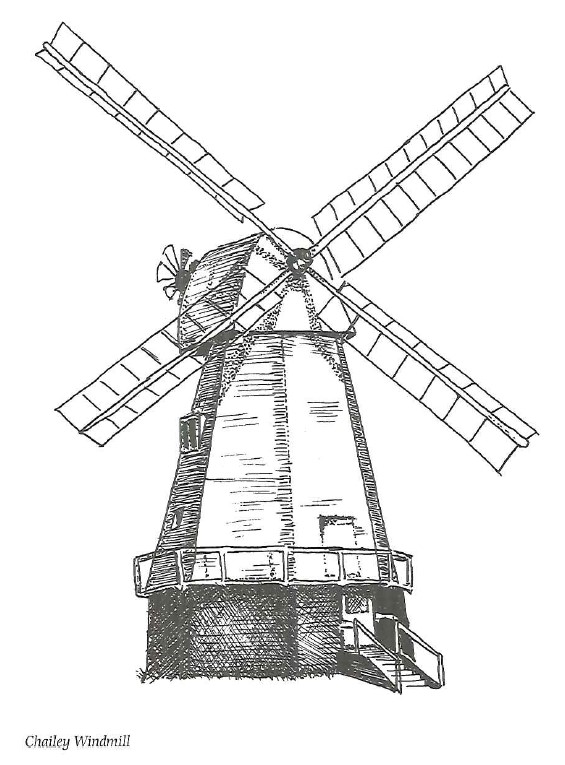Even if you have never been here the chances are that you have seen it, however unconsciously. The old houses and narrow village street are a favourite with television and film crews seeking an authentic backdrop for period pieces.
Technically its full name is West Firle, but a look at the map will not find you an East, or a North and South for that matter. There was an East Firle once, a vanished village known by the alternative name of Heighton St Clere. When Eleanor St Clere married John Gage of Cirencester in the early 15th century she brought her estates with her and these were augmented by the marriage of their son William in 1472 to Agnes Bolney, coheiress of the manor of Firle, where the Gage family have lived ever since. Their home down the centuries has been Firle Place, a mellow mansion regularly open to the public and containing a superb collection of furniture and works of art.
The influence of the Gage dynasty has helped to make Firle special: remote beneath the hills and its famous 718ft beacon, unspoilt and almost feudal in nature. The church is full of memorials to them; the village reading room was given by public subscription in 1913 in honour of the then Viscount and bears the initial ‘G’ and a coronet over the door; even the pub belongs to the Gages.
The family’s fame as the friends of royalty, as distinguished soldiers, sailors and statemen, should not blind us to the fact that the greengage was first grown in England at Firle Place, introduced by the botanical traveller Thomas Gage.
Another Thomas Gage was Commander-in-chief of the British forces in America at the outbreak of the War of Independence which followed his skirmish at Lexington in April 1775. Two months later he fought and lost the Battle of Bunker Hill and resigned.
Stealing a sack full of birds from Lord Gage’s pigeon house cost journeyman blacksmith Jesse Attree and farm labourer
William Kennard dear. They appeared before the Quarter Sessions in October 1815 when the bench included none other than Lord Gage himself, making his debut as a magistrate alongside Sir John Shelley, brother of the poet, and the Earl of Chichester. The two accused were found guilty and each sentenced to be transported for seven years.
Curiously there appear to have been no hard feelings on the part of the wealthy landowner and the humble blacksmith. At the expiry of his sentence Attree returned to Firle from Australia; Lord Gage put no obstacles in his way and he was able to resume his trade. He died at Firle at the age of 71 and was buried there in 1851.
The days of October melt into each other … We begin with mist and end with mist.’ The rather melancholy words were written by Virginia Stephen at Firle in 1911. Aged 29, she was
recovering from what was to be one of her many bouts of recurring mental depression. She had taken a lease on the Edwardian Talland House, which she later described as ‘a hideous surburban villa’ that did not meet the requirements of a rural retreat. She found the rest of the village delightful, however, and explored the Downs at length with the man who was to become her husband and by whose name she is known as a writer throughout the world, Leonard Woolf. In the churchyard, the graves of Vanessa Bell (Virginia’s sister) and Duncan Grant can be found (see Berwick).
Change comes slowly in Firle and it was a wrench for the regulars in 1985 when the Hafflett family ended their 77-year link with The Ram Inn. The outgoing tenants were George Hafflett and his wife Mary, whose grandfather and then mother had run the old inn since 1908. The couple took a family heirloom with them – the pub cash till so antiquated that it was capable of giving change for a sovereign!
The strange tale of the phenomenon in the sky’ made the village the focus of world attention during the Second World War. Several people were witness to the vision of the crucified Christ appearing in the sky surrounded by angels, and a Mrs Steer was able to tell a Southern Weekly News reporter: ‘I happened to go outside my back door and noticed a white streak or road across the sky. Then gradually I saw a cross appear, standing upright, with Christ upon it. Shortly afterwards there were six angels on each side of Him. It quite frightened me at first. I felt quite ill and I called my neighbour to look at it.’
Mrs Steer said the figure of Christ had the head drooping to one side: ‘I could see the nails in His feet and in His hands, and the angels were so plain I could see their fingers and their toes. Their wings reached almost to the ground. One of the angels had what appeared to be a harp and another had her arms outstretched towards Christ.’
She said the vision did not seem to be cloud formation. It did not move. The picture appeared gradually and then slowly faded away, lasting in all about two minutes.
Strangely reminiscent of the Angels of Mons in the First World War, the vision appeared at about 11 am on the first Sunday in September 1940, by day and by time the anniversary of the outbreak of war.
